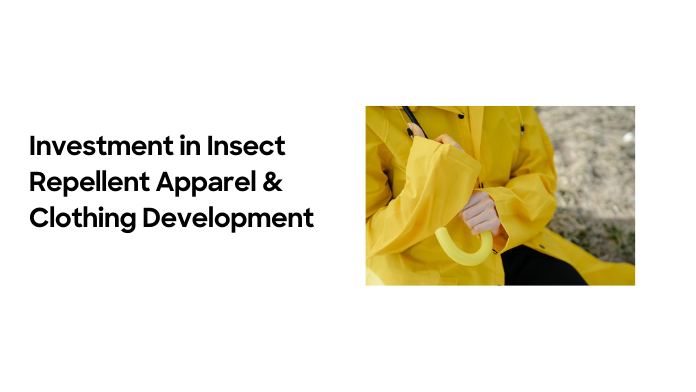Investment in insect repellent fabrics and clothing development ramps up as climate change causes biting insects to migrate to more temperate regions and insects build resistance to chemical insecticides
Huge investment from government and private sources is being channeled into the development of insect repellent fabrics and clothing, according to “Insect repellent apparel: gearing up for insect-borne diseases” — a 41-page report from the global business information company Textiles Intelligence.
Such development is being made with urgency as climate change is causing many biting insects to migrate to regions which are more temperate and insects are building resistance to chemical insecticides at an increasing rate.
As a result of rising global temperatures, insect-borne diseases which are endemic in tropical and sub-tropical parts of the world are spreading to regions such as the USA and Western Europe.
In the USA, the rate of incidence of Lyme disease, which is carried by ticks, has nearly doubled in recent years to an estimated 476,000 cases a year. The seriousness of Lyme disease is illustrated by the fact that up to 5% of untreated patients may develop chronic neurological complaints within years or even months of being bitten by an infected tick.
Two further examples of the growing threats posed by insects are the recent severe outbreaks of Zika virus in South America and Chikungunya virus, also in South America. Both diseases are transmitted by mosquitoes and are potentially fatal.
Unfortunately, scientists have not yet developed therapeutic drugs and vaccines which are capable of combating many of the diseases associated with biting insects.
Also, most of the preventative measures which people can take to protect against biting insects have major drawbacks. Such measures include the application of topical insect repellents — which can be absorbed by the skin and cause skin irritation — and the use of devices and insecticide treated nets (ITNs), which can be inconvenient to use.
Insect repellent apparel provides an effective alternative to these measures as it has fewer drawbacks. Also, insect repellent apparel is odorless and more convenient to use, it provides greater protection time, and it reduces the likelihood of allergic reactions compared with topically applied products.
A testament to the benefits of insect repellent apparel is the increase in demand for such apparel from the military. Today, several armies around the world routinely issue combat uniforms treated with insecticides to their personnel.
The benefits of insect repellent products are also being recognized by consumers. In the USA, for example, consumer survey data reveals that over 195 mn people, or around 60% of the population, use insect repellent products — and usage is projected to increase.
In the case of body-worn insect repellents, the value of the global market is forecast to increase at a compound annual growth rate (CAGR) of 8% between 2020 and 2027.
More specifically, global revenues from sales of insect repellent apparel are expected to grow at a CAGR of 6.2% between 2020 and 2031 and exceed US$1 bn in 2031.
The main impetus to this increase will be provided by North America — the world’s largest single market for insect repellent products.
——————————————————————————————————————————————
“Insect repellent apparel: gearing up for insect-borne diseases” is available for purchase from the global business information company Textiles Intelligence and costs £330 (UK), Euro610 (Europe, Middle East or Africa) or US$800 (Americas or Asia Pacific). For further information or to purchase this report, visit https://bit.ly/3DHEDhm
The report is also available in Issue No 74 of Performance Apparel Markets. Other reports published in this issue include: “Fast track: market trends and developments in apparel and accessories at OutDoor by ISPO 2022”, “Performance apparel markets: product developments and innovations, August 2022”, “Profile of KMD Brands: leading the trail in outdoor apparel and surfwear”, and “Performance apparel markets: business update, August 2022”.
Performance Apparel Markets is published four times a year by Textiles Intelligence. Each issue provides an independent and worldwide perspective on the performance of the apparel industry.
A year’s printed subscription to Performance Apparel Markets costs £980 (UK), Euro1,710 (Europe, Middle East or Africa) or US$ $2,160 (Americas or Asia Pacific). An electronic supplement is also available; please contact Textiles Intelligence for details. Single issues and multi-report packages are available on request. To download a sample issue of Performance Apparel Markets, visit https://bit.ly/2FaEiHn
For further information about all Textiles Intelligence publications, please visit https://www.textilesintelligence.com
Contacts:
Emily Burke
Senior Editor
[email protected]
General enquiries
[email protected]
Tel: +44 (0)1625 536136
Textiles Intelligence, Pentland House, Village Way, Wilmslow SK9 2GH
Also read: How is climate change affecting the Uniform Industry?













